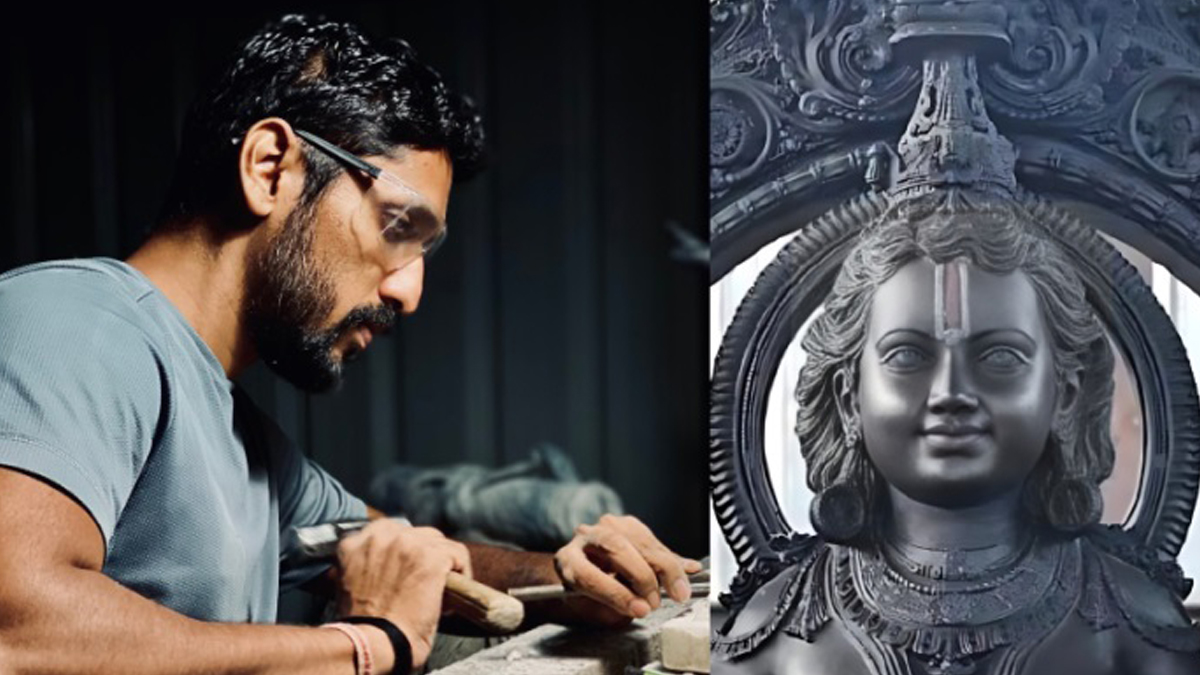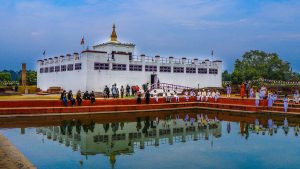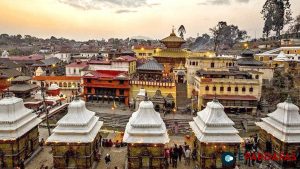
Arun Yogiraj: The Maestro Carving History in Ayodhya – Who Is He?

In the heart of Ayodhya, where the grandeur of the Ram Mandir construction captivates the soul, a tale of dedication, heritage, and artistic prowess unfolds – the story of Arun Yogiraj, the sculptor who breathed life into the revered idol of Ram Lalla. His name echoes through the corridors of time, marking a monumental chapter in the creation of a divine symbol.
Born in Mysuru, Karnataka, Arun Yogiraj is not merely a sculptor; he is a custodian of a rich family legacy. From the celebrated lineage of his grandfather, Shivalingaiah, and his father, Yogindra Nath, Arun imbibed the art of sculpting, learning the subtleties of stonework and infusing vitality into lifeless forms under their watchful guidance.
The early works of Arun Yogiraj bear the indelible imprint of his familial influence, reflecting a profound understanding of traditional South Indian iconography. Deities like Vishnu, Krishna, and Ganesha came to life at the hands of his chisels, establishing his reputation as a skilled and meticulous artist that transcended the borders of Karnataka.
However, the turning point in Arun Yogiraj’s journey came in 2020 when destiny handed him a challenge of historic proportions. Selected as one of the three finalists to sculpt the new idol of Ram Lalla for the Ram Mandir in Ayodhya, Yogiraj faced not just a commission but a responsibility steeped in centuries of faith and devotion.
With unyielding dedication, Arun Yogiraj delved into the project, studying the existing modest terracotta idol of Ram Lalla worshipped for decades. Seeking to capture its essence while infusing his own artistic interpretation, he sourced a unique black stone, the “Krishna Shila,” from Saligrama in Nepal, believed to be inherently divine. The rhythmic clanging of his chisel against the stone in his workshop resonated for months, each strike bringing the divine form closer to realization.
The result is a 51-inch masterpiece, depicting Ram Lalla as a young boy exuding ethereal calmness and benevolence. The delicate features, adorned with intricate jewelry, reflect a childlike innocence tempered with regal grace. The idol’s serene countenance and poised posture have garnered praise from devotees and art critics alike.
On January 22, 2024, the world will witness the ‘pran pratishtha’ or consecration ceremony of Ram Lalla in the sanctum sanctorum of the Ram Mandir. This momentous occasion will mark the culmination of Arun Yogiraj’s artistic endeavor, solidifying a pivotal moment in Indian history. His creation has become a symbol of hope, unity, and the enduring power of faith.
Beyond his role as a sculptor, Arun Yogiraj is a recipient of the prestigious Karnataka Lalithakala Academy Award for his contribution to sculpture. His repertoire extends beyond deity sculptures to include intricate stone mandapams and architectural elements. A strong advocate for preserving traditional art forms, Yogiraj actively mentors aspiring sculptors.
Notably, his artistic expressions go beyond the Ram Lalla idol; statues of prominent figures like Adi Shankaracharya and Netaji Subhas Chandra Bose bear the mark of his skillful hands. For Arun Yogiraj, sculpting is not just about shaping stone; it’s about breathing life into symbols of faith, bridging the gap between the divine and the mortal. In doing so, he has etched his name not only in the annals of Indian art history but also in the hearts of millions.
As his sculpted legacy stands tall in Ayodhya, it serves as a beacon of faith and a reminder of the enduring spirit of Indian art, a testament to Arun Yogiraj’s remarkable journey as the man who gave form to the divine in the heart of Ayodhya.






![Ghode Jatra festival observed in Kathmandu [Photos]](https://english.pardafas.com/wp-content/uploads/2024/04/ghodejatra-300x169.jpg)






Comments